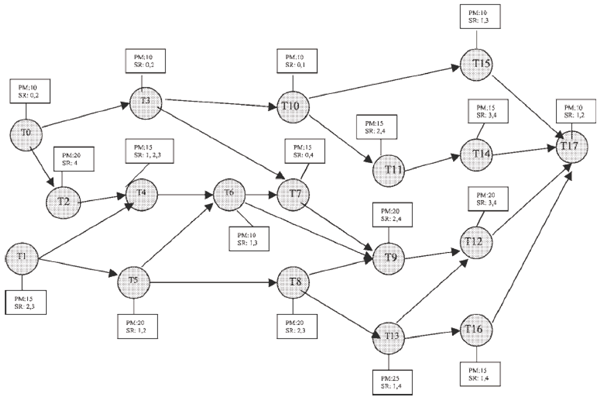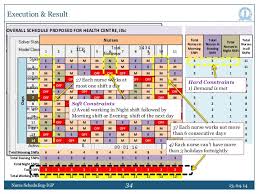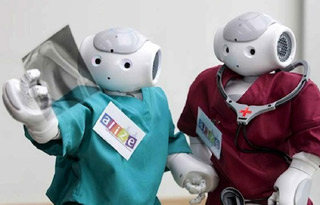Are you impressed with the ancient Egyptians’ ability to predict the rising of the Nile? How about the ability of every civilization worthy of the name from MesoAmerica to Angkor Wat to predict lunar eclipses? In the complete absence of modern measuring instruments, both capabilities are indeed worthy of praise. But there is one absolutely necessary predictive facility of civilization that remains difficult, if not impossible of perfection even to this day.
What, you wonder, is the old fool talking about?
Drawing up a schedule, of course! A schedule defined by our Wiki friends as “...a basic time-management tool...a list of times at which possible tasks, events, or actions are intended to take place, or...a sequence of events in the chronological order in which such things are intended to take place…” And anyone who has ever had the job of drawing up a schedule for more than one person--himself or herself--knows how tough it is.
The macro universe may run on an easily predictable timetable, but our fellow human beings do not. Predicting the rising of the Nile and lunar eclipses were--and still are--important capabilities that allowed civilizations to feed its citizens; but civilization itself depended--and still depends--on scheduling individual humans in a manner best suited to completing the work necessary to keep the crops harvested and people fed; not to mention building roads, pyramids and raising armies. The planets follow their courses through a vacuum but the creatures on this earth do not; and not one of these creatures follows a course more difficult to plot than a cat! Er… I mean a human; no one would be foolish enough to plot a schedule for a cat!

The Wiki page on scheduling speaks to the difficulty of plotting schedules for humans. The process is “usually subject to constraints,” Wiki says in a classic understatement. Constraints being things like, you know, sickness, car problems, too much to drink the night before; even death.The stars and planets aren’t “subject to constraints” like those.
Wiki continues “...scheduling… is the subject of several problems in the area of research known as operations research…” One of those problems is called the travelling salesman problem. How to best schedule a number of journeys to find the optimal solution to a combination of time restraints and car expenses. If that sounds like a simple problem, guess again. The salesman problem and the other well-known operations-research problem referred to in the Wiki article, the nurse scheduling problem, cannot be solved by linear programming as integer variables are involved. Wiki: “ Although efficient algorithms exist to give integer solutions in some situations, most problems that require integer solutions cannot yet be solved efficiently.” Why? Because you can’t have a half-salesman solution; individuals are the ultimate integers.
But digital help is on the way. Particularly for those suffering the nurse scheduling problem. While hospitals have used robots for years in menial jobs like carting supplies from one hospital ward to another, recently there was word of a robot, a NAO robot, scheduling nurses in labor and delivery units. This NAO, programmed by a team from the Massachusetts Institute of Technology (MIT), evidently performed some scheduling wonders at the labor ward of Beth Israel Deaconess Medical Center in Boston. Labor wards present particularly difficult scheduling problems as the nurses not only have to predict when a woman will arrive on the ward and how long the labor will take, but plan for those patients that will require C-sections and other life-saving procedures.
problem. While hospitals have used robots for years in menial jobs like carting supplies from one hospital ward to another, recently there was word of a robot, a NAO robot, scheduling nurses in labor and delivery units. This NAO, programmed by a team from the Massachusetts Institute of Technology (MIT), evidently performed some scheduling wonders at the labor ward of Beth Israel Deaconess Medical Center in Boston. Labor wards present particularly difficult scheduling problems as the nurses not only have to predict when a woman will arrive on the ward and how long the labor will take, but plan for those patients that will require C-sections and other life-saving procedures.
 NAO was trained by watching nurses perform on the ward in what robotics people call learning by demonstration. After training and additional programming, NAO was able to provide the nurses with scheduling advice that they took as a best practice almost 90% of the time. What’s more, the nurses involved were almost 100% positive about the little robot and its future on the ward.
NAO was trained by watching nurses perform on the ward in what robotics people call learning by demonstration. After training and additional programming, NAO was able to provide the nurses with scheduling advice that they took as a best practice almost 90% of the time. What’s more, the nurses involved were almost 100% positive about the little robot and its future on the ward.
As with teachers, robots will never completely take the place of humans in the nursing profession. The human touch is too important. Also as with teachers, robots can free nurses from jobs that have little to do with the practice of nursing and everything to do with organizing, scheduling.

